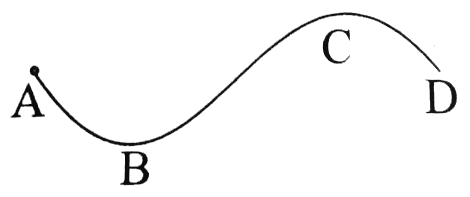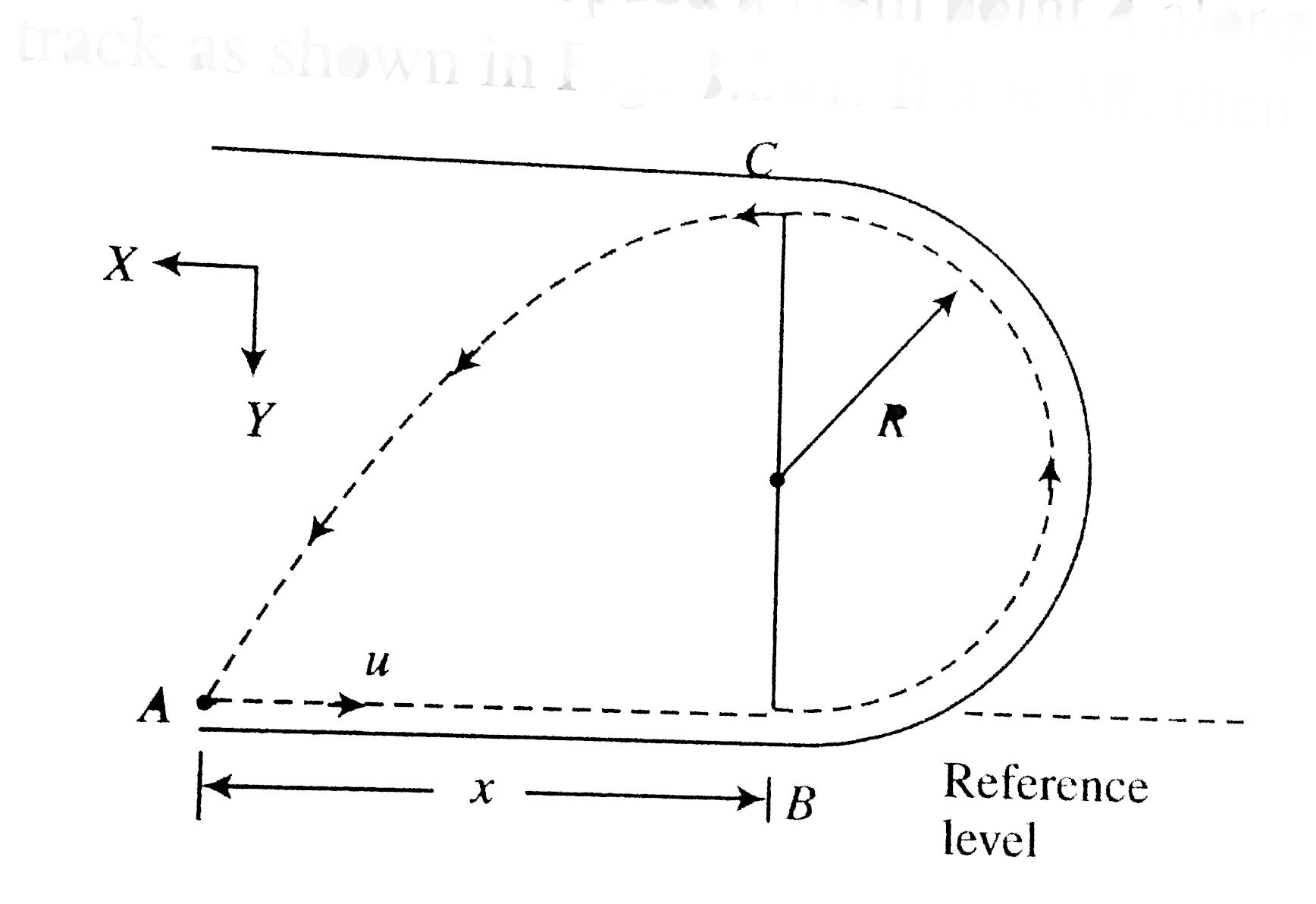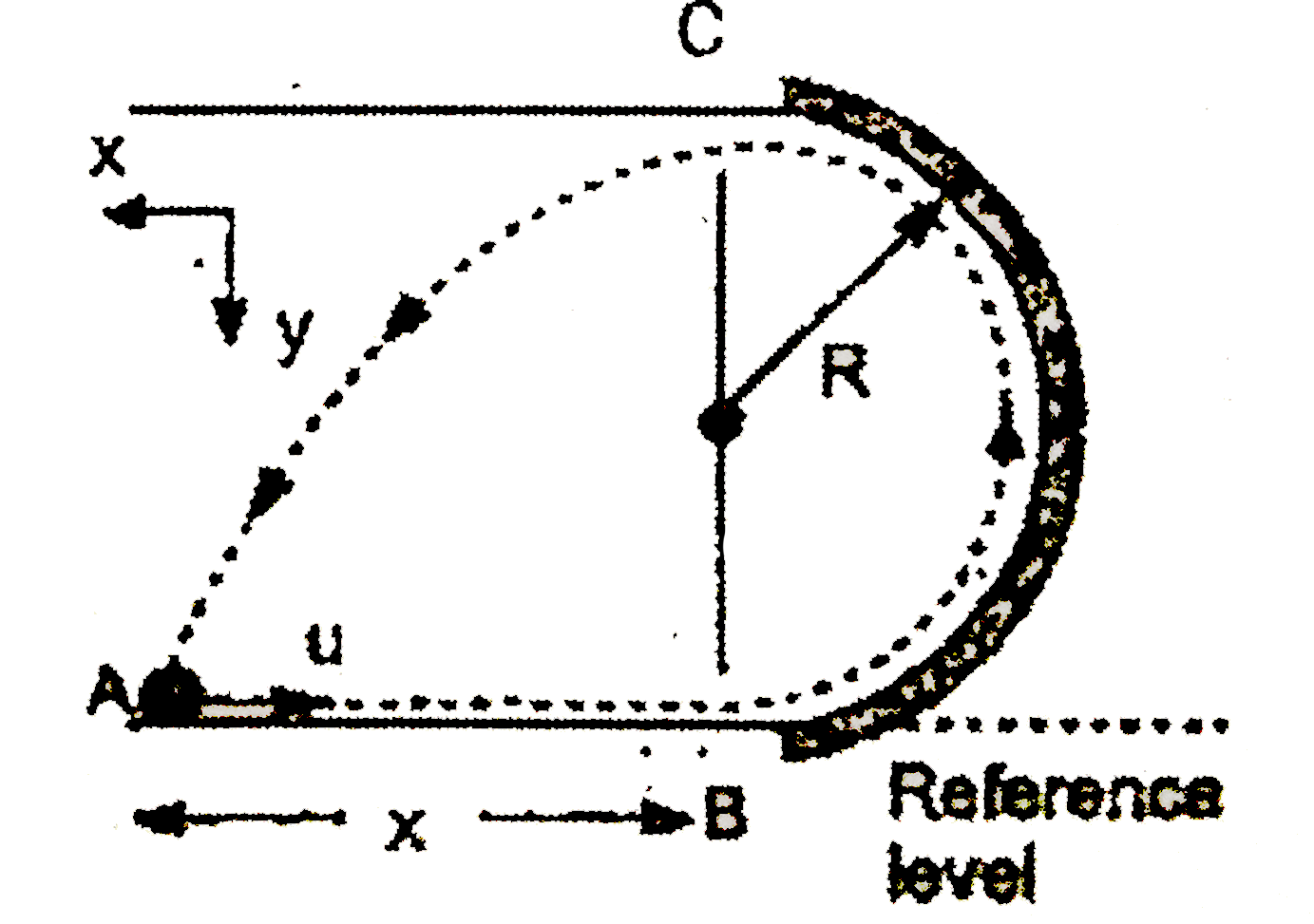which ball can reach D?
1
2
1 and 2
Cannot be predicted
The correct Answer is:B
Ball 1 loses energy by friction. It cannot cross point C.
Topper's Solved these Questions
- WORK , ENERGY AND POWERBOOK - NCERT FINGERTPS ENGLISHCHAPTER - WORK , ENERGY AND POWEREXERCISE - NCERT
18 Videos
- WORK , ENERGY AND POWERBOOK - NCERT FINGERTPS ENGLISHCHAPTER - WORK , ENERGY AND POWEREXERCISE - ASSERTION & REASON
15 Videos
- WAVESBOOK - NCERT FINGERTPS ENGLISHCHAPTER - WAVESEXERCISE - Assertion And Reason
15 Videos
Similar Questions

A curved suface is shown in figure. The portion BCD is free of friction. There are three spherical balls of identical radii and masses. Balls are released from rest one by one from A which is at a slightly greater height than C.
Wioth the surface AB, ball 1 has large enough friction to cause rolling down without slipping, ball 2 has a small friction and ball 3 has a negligible friction.
(a) For which ball is total mechanical energy conserved?
(b) Which ball(s) can reach D?
(c )For ball which do not reach D, which of the balls can reach back A?
View Solution
A curved suface is shown in figure. The portion BCD is free of friction. There are three spherical balls of identical radii and masses. Balls are released from rest one by one from A which is at a slightly greater height than C.
Wioth the surface AB, ball 1 has large enough friction to cause rolling down without slipping, ball 2 has a small friction and ball 3 has a negligible friction.
(a) For which ball is total mechanical energy conserved?
(b) Which ball(s) can reach D?
(c )For ball which do not reach D, which of the balls can reach back A?
View Solution
Knowledge Check

A curved suface is shown in figure. The portion BCD is free of friction. There are three spherical balls of identical radii and masses. Balls are released from rest one by one from A which is at a slightly greater height than C.
Wioth the surface AB, ball 1 has large enough friction to cause rolling down without slipping, ball 2 has a small friction and ball 3 has a negligible friction.
(a) For which ball is total mechanical energy conserved?
(b) Which ball(s) can reach D?
(c )For ball which do not reach D, which of the balls can reach back A?A1 and 2B1C2DCannot be predictedA small ball is rolled with speed u from point A along a smooth circular track as shown in figure. If x=3R, then

What is the minimum value of x for which the ball can reach the point of projection after reaching C?A2RB5RC3RD52RA solid iron ball and solid aluminium ball of the same diameter are released together on a deep lake.Which ball will reach the bottom first ?
AAluminium ballBIron ballCBoth balls will reach the bottom at the same timeDThe aluminium ball will never reach the bottom and will remain suspended in the lake .
A small ball is rolled with speed u from piont A along a smooth circular track as shown in figure. If x=3R, then

What is the minimum value of x for which the ball can reach the point of projection after reaching C?
View SolutionA small ball is rolled with speed u from point A along a smooth circular track as shown in Fig. 3E.33. If x=3R, determine the required speed u so that the ball returns to A, the point of projection. What is the minimum value of x for which the ball can reach the point of projection ?

View SolutionIf a ball A is dropped while B is projected vertically down. Which ball will reach the ground (a) first (b) with greater velocity?
View SolutionThe number of ways in which 10 balls can be selected from 10 identical green balls, 10 identical blue balls and 9 idenitcal red balls are
View SolutionThe number of ways in which 10 balls can be selected from 10 identical green balls, 10 identical blue balls and 9 idenitcal red balls are
View Solution
